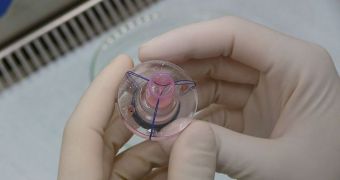Experts at the New York University (NYU) Materials Research Science and Engineering Center (MRSEC) announce the development of a method for replicating naturally-occurring, cell-to-cell adhesion. This could lead to improving the efficiency of artificial tissue engineering techniques.
Physicists with the Center, which is sponsored by the US National Science Foundation, created an oil-in-water solution whose properties are identical to those on the surface of cells. The oil droplets adhere to each other in a way that replicates the mechanical properties of tissues, the team explains.
The work was carried out by scientists working in the lab of assistant professor Jasna Brujić. She is based at the NYU Department of Physics, and is a member of the Center for Soft Matter Research.
The material the team created could theoretically be used for a wide variety of applications, including the improvement of current artificial tissue engineering techniques, and the development of truly biocompatible cosmetics.
Details of the research were published in the latest issue of the esteemed journal Proceedings of the National Academy of Sciences (PNAS). Brujić explains that cell-to-cell adhesion is absolutely critical for tissues, since it is the main process that allows them to maintain their integrity.
“By varying the amount of force by which the droplets of oil were compressed by centrifugation and the amount of salt added to this solution, the NYU team was able to isolate the optimal conditions for cell-to-cell adhesion,” an NYU press release explains.
“Screening electrostatic charges by the addition of salt and compressing the droplets by force enhances protein-protein interactions on the droplet surfaces. This leads to adhesion between contacting droplets covering all the interfaces, just as in the case of biological tissues,” experts add in a statement.
Using this research as a starting point, scientists and engineer may soon start to enhance the consistency and function of a variety of consumer products, by simply reconfiguring their molecular makeup to reflect the new discoveries.

 14 DAY TRIAL //
14 DAY TRIAL //